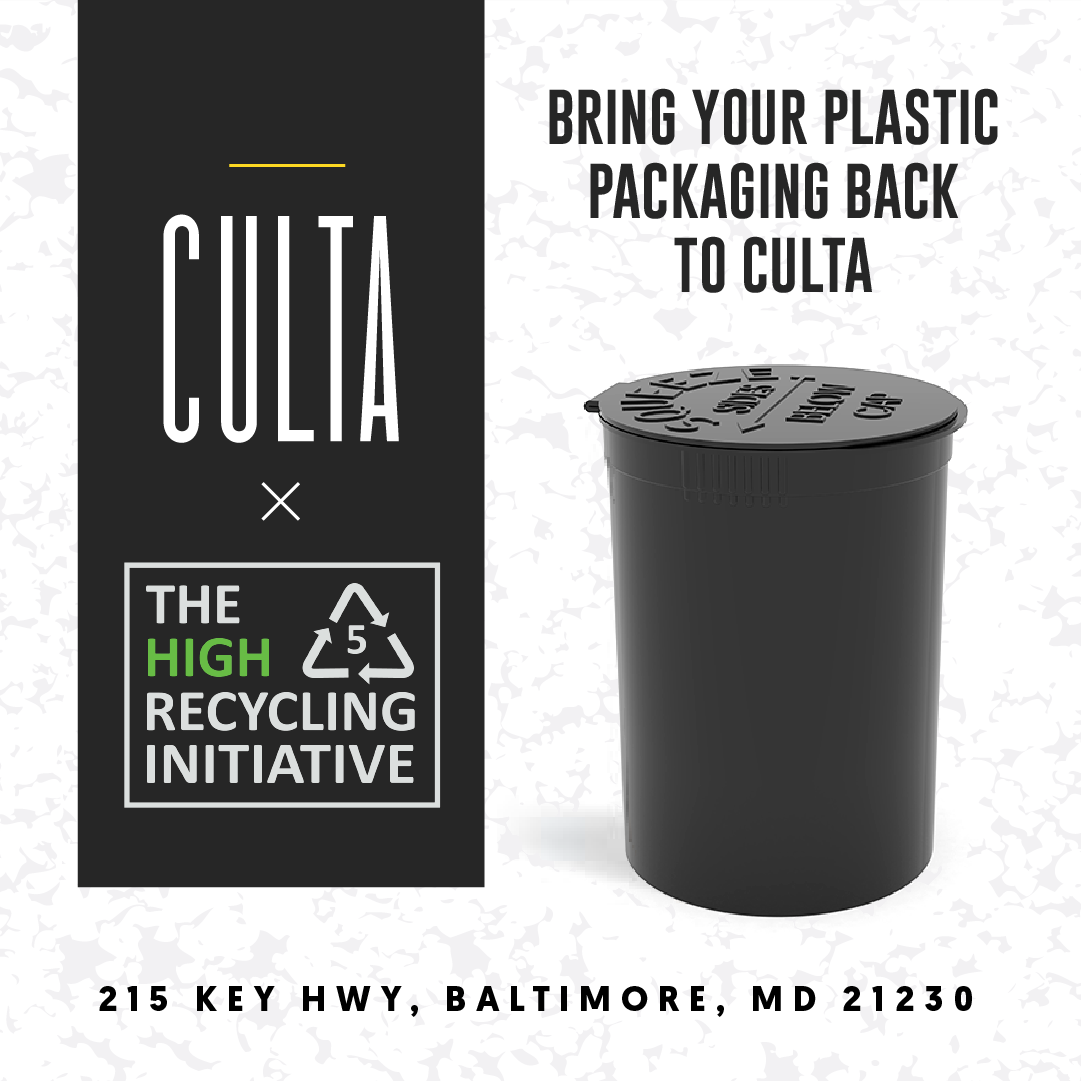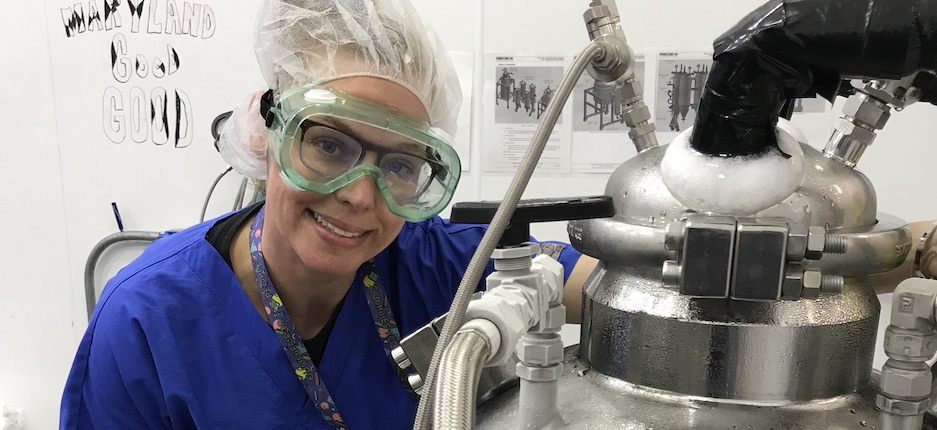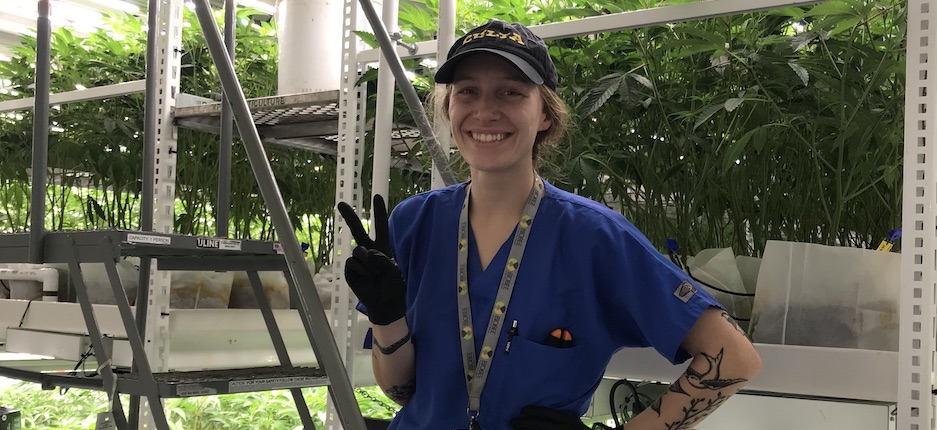Interview with The High 5 Initiative
First, tell us a little bit about your background.
Hi! I’m Phil. I’m the Executive Director of The High 5 Initiative.
Before I was an Executive Director for a Nonprofit, I was the Vice President of Operations for a manufacturing company and before that I owned and operated my own small niche landscaping business.
My wife Bri, the cofounder of TH5I, and I, have always been drawn to nature. Both of us had experiences from our childhoods that developed our understanding and respect for our place in the whole of nature.
-png.png)
We have both had career experiences in the Manufacturing Industry, and I even got to create a few new materials for the global markets. We are both artists. We are both makers. We are both community advocates.
We love music, raw art, adventure, cannabis, food and drink, but we feel most at home in nature and on the water. If you can’t find us, we are probably out in nature doing every single one of those things at the same damn time!
What inspired you to start The High 5 Initiative?
My wife and I are always in the process of refining our habits in an effort to limit our negative impacts on the environment. To live as sustainably as we can, you might say. Sustainability, by the way, just means to balance the inputs and outputs in a way that the overall system can sustain itself. So in this case, the system is the natural environment.
One of the most eye opening steps to becoming sustainable is trying to go “zero waste”, or to create 0 trash. When you try to go “zero waste”, you have to start somewhere, so the first thing you do is focus on limiting the “waste” you are already generating. Sometimes it’s called a plastic audit or a waste audit, but basically you take a detailed inventory on what you have in your trash. That gives you a clear picture of where you are and where you need to go. It sounds super simple, but it takes on a life of its own.
As we were going through the process, we ran into a bunch of single use plastic packaging. Everything we seemed to buy had plastic in its packaging. At this point in the audit, you ask yourself a series of questions to see if you can make a change in your purchasing habit to eliminate the waste. You get the idea, buy in bulk, use reusable containers, grow your own…
Another odd thing popped up during the audit process. As new patients, we had been hoarding our containers in a box in the closet, and when we opened the door, they spilled out all over the floor. More plastic to add to the list.
The first thing we did was change our purchasing habits to limit anything single use, single use is the opposite of sustainable. We switched to reusable water bottles, changed to reusable bags etc. Then we looked at what was left. The next step is reuse. See where this is going? Refuse, Reduce, Reuse, Recycle, Rot. Eventually you get to RECYCLING.
In Maryland, and most of the world actually, we use the “Single Stream Model” for recycling. The basic concept of recycling is 3 steps, hence the 3 mobius arrows. Step 1 is what most people think of as recycling, to collect the materials, and sort/separate them. Most of us forget that step 2 is for a Manufacturer to make something out of that material. The final step is when we, the consumers, purchase “recycled content” material.
So we called our county recycling coordinator to find out what we needed to do on our end to enable them to recycle what plastic we had left. Plastic bags, food wrap, and of course ALL THOSE WEED CONTAINERS.
The answer we received inspired us to look deep into the issues. They said no matter what we did on our side, they simply were unable to recycle ANY OF IT. Instead, every single item would end up right back in our environment in some way or another. In our minds, they just said, to be a legal cannabis patient we had to pollute our environment, and that just didn’t sit right with us.
After a long period of running down all of the existing options, and really comprehending the issues, we were still left with no solutions.
That is about the time we decided to start to look at what we could do to help.
Tell us a little bit about the process.
So the first thing to know is that our recycling initiative is essentially a “Dual Stream” model for recycling. In a dual stream model the materials are separated prior to collection, which minimizes the contamination rate of the collection. If you seperate your paper from the rest of your recycling, that's a dual stream.
The other thing to know is that this is a system designed to enable both the industry and the consumers/patients to be part of solving this really massive issue together. That’s pretty unique to this industry. Almost all medical cannabis patients are inherently environmentally friendly people. And almost all of the medical cannabis industry are also patients. And no one wants to be forced to pollute the environment to be a part of it. But that is what is happening.
Now, here in Maryland, a patient can buy their meds, go home and consume their meds, and bring that package back to the store the next time they purchase and have it disposed of properly.
The process is super simple - Dispensaries/Headshops/Providers join and serve as Participating Collection Centers (PCCs) for the patient community. Patients drop off their unwanted single use containers at one of the PCC’s. We pick up and transport the collections from the PCCs to our facility. There we sort, separate and grind each material. After we collect 40,000 lbs of each material, the material goes to a secondary processing facility in Maryland where the plastic is cleaned up and made into a viable raw material. Then it is sold to and used by a manufacturer to make a new plastic widget. And the pop top gets a new life as a bumper, or air conditioner pad, or some other non food grade thingamajig.
We've heard that the recycling process can be a bit manual -- is that true?
Big, for-profit recyclers, called Material Recovery Facilities or MRFs, have big budgets and sometimes invest in hi tech automated machinery to sort and separate their collections. Remember, they “manufacture” raw materials from the collection. It turns out that the limits of that automation is exactly what keeps those MRF’s from being able to sort and separate well enough to meet the needs of the manufacturer. When they can’t sell it, it becomes an expense.
Our system is supposed to be Dual Stream, and only accept #5 plastic. Unfortunately, it is really hard for people to know what type of plastic their stuff actually is. For instance, a pop top is all #5, but one of those slide top packages are #5 on the bottom and the top is #4. A patient can’t tell that the bottom section is #5. The only mark on the bottom is a “mold” mark that specifies the cavity of the mold this particular thing came out of. The only way to know that is to test it. Most of the time, the producer (dispensary/grower/processor) doesn’t even know. The greenwashing that permeates the packaging industry makes it almost impossible for the person buying a pop top, for instance, to have a clue what’s in it, even when they ask.
So we sort and we separate out all of the items that are not #5 plastic by hand. That way we do not contaminate the end material. Since we are an environmental nonprofit, we have different motivations than the for-profit recyclers, and have different missions. The materials that are not #5 go through the same 5-R Zero Waste audit process and are all properly disposed of to ensure they are kept out of our environment. Some even become art to keep the conversation about the impacts of single use plastic going.
-png.png)
What's #5 plastic packaging, anyways?
#5 plastic is Polypropylene, also known as PP. It is the most abundantly produced and least recycled plastic on earth. Super easy and cheap to produce from fossil fuels, so it gets used in all types of single use packages. The cannabis industry startups know it in the form of dube tubes/cart tubes and especially the infamous “Pop Top”. Pop Tops are an extremely cheap option for single use packaging and are standard issue for this industry. When you squeeze a pop top, the top pops, but still stays connected by something called a “living hinge”. #5 plastic is the only plastic with the material properties that allow that hinge to function.
#5 plastic is the least recycled, and is the most abundant plastic found in the ocean. It floats on water and wave friction breaks it down into microplastics quickly, leaving them on the surface of the water, but making them impossible to remove easily. #5 plastic in the marine environment attracts and adsorbs algae, which then is perceived as food by marine life. Every single human organ tested for plastic has had #5 plastic in it, including every human placenta. Currently there are lots of active scientific experiments looking into the immune system impacts of nanoplastics found in humans, since nanoplastics consolidate in our lymph.
On the plus side, it’s cheap to make. Yeah, that’s all I got.
Do you only recycle/accept pop-tops at your collection locations?
Yes, for each material we collect, we have to have an output for it. Just like the big for-profit industry, we have to purchase specific machinery for the size and type of material. For our program we have a grinder specifically for the size of the # 5 pop-tops and “doob tubes” that come through the collection. When we get the extra long containers, like the “quarter pop tops” we have to cut them in half with a saw first.
-png-1.png)
Any tips for patients who want to upcycle their cannabis jars & give them a second life around the house?
Absolutely! Rethink what you call “waste”. Waste is a concept. There is no such thing as “waste” in nature. Before you bring them back, see if you can reuse them for some other purpose. Before the program we didn’t have a path to dispose of our doob tubes, so we used them to make a tail for my wife’s dormouse costume (from Alice in Wonderland) for Halloween.
Get creative with it, we use the plastic materials we can’t recycle in art projects. The material is still a good material, we just need to change our perspective to figure out what it’s good for! Every piece of plastic ever made still exists, so use em up!
The art projects we create with these materials focus on wildlife that we see everyday in our local environment eating or having to deal with the immediate impacts of this problem. The goal with these projects is to bring awareness to the way plastics affect our local communities.
Sometimes we get asked about glass jars. These are also NOT RECYCLABLE IN MARYLAND! I know, I know, that one hurts. We use them for local water testing, we use them for holding paints. In the shop, you can hold and sort small hardware. But, eventually we run out of these “REUSE” ideas, so we give them to a local maker on our Main Street who uses them for her soy candles.
How does waste in the cannabis industry compare to other industries?
It smells better.
How do I find a collection center near me?
You can go to our website, www.TheHigh5Initiative.com, and go to the Recycling Initiative page or you can find us on social media @thehigh5initiative
I love this cause but don't live near a collection site, how else can I help?
There are tons of ways to help! We are a small 501c3 non profit organization and this program is entirely funded through donations and industry participation. The biggest help is to spread the word. Dope ass patients don’t let other dope ass patients pollute.
-png-1.png)
My favorite dispensary doesn't participate but I want them to - how can I get them involved?
We can serve every dispensary in Maryland and everyone is invited to become a Participating Collection Center.
If your favorite dispensary is not a Participating Collection Center, let them know you would like them to look in it. Sometimes they just need to hear it from the patients.
What do you hope the future holds for plastic waste in the cannabis industry?
We hope to see it drastically reduced, if not eliminated. Single use plastic is just dumb. Like using a cannon to kill the cricket.
We would like to see every industry transition to packaging that is reusable, “backyard” compostable or 100% locally recyclable.
We think the cannabis industry is a no brainer to lead the way.
How can we stay updated on The High 5 Initiative?
@TheHigh5Initiative on Instagram and Facebook.
Anything else you'd like to add?
Absolutely!
Sometimes it gets confusing and people think we are a Cannabis company or a Recycling company. We aren’t either of those things, really. We serve our communities as Environmental Stewardship Partners.
We are a local - Maryland based - 501c3 Environmental Nonprofit, our mission is to practice, promote and enable sustainable practices and the conservation of nature. And we accomplish our mission by providing underserved communities sustainable paths that enable the community itself to address their most pressing environmental issues.
Check us out and find out about our other initiatives.




